Tunnel lights are special lamps used for tunnel lighting to solve the “black hole effect” or “white hole effect” caused by the sudden change of brightness when the vehicle enters or exits the tunnel.Wonder specializes in specific projects related to the use of LED lights for tunnels and offers solutions for various tunnel lighting having diferent requirements and challenges. It has recently been confirmed in many parts of the world that L ED tunnel ights are the perfect solution for tunnels and underpasses once known as dark and muddy passages because of it remarkable brightness, lighting uniformity & life span, which is the advantages of LED Tunnel Lights over conventional Metal Halide lamps of HID Lamps.
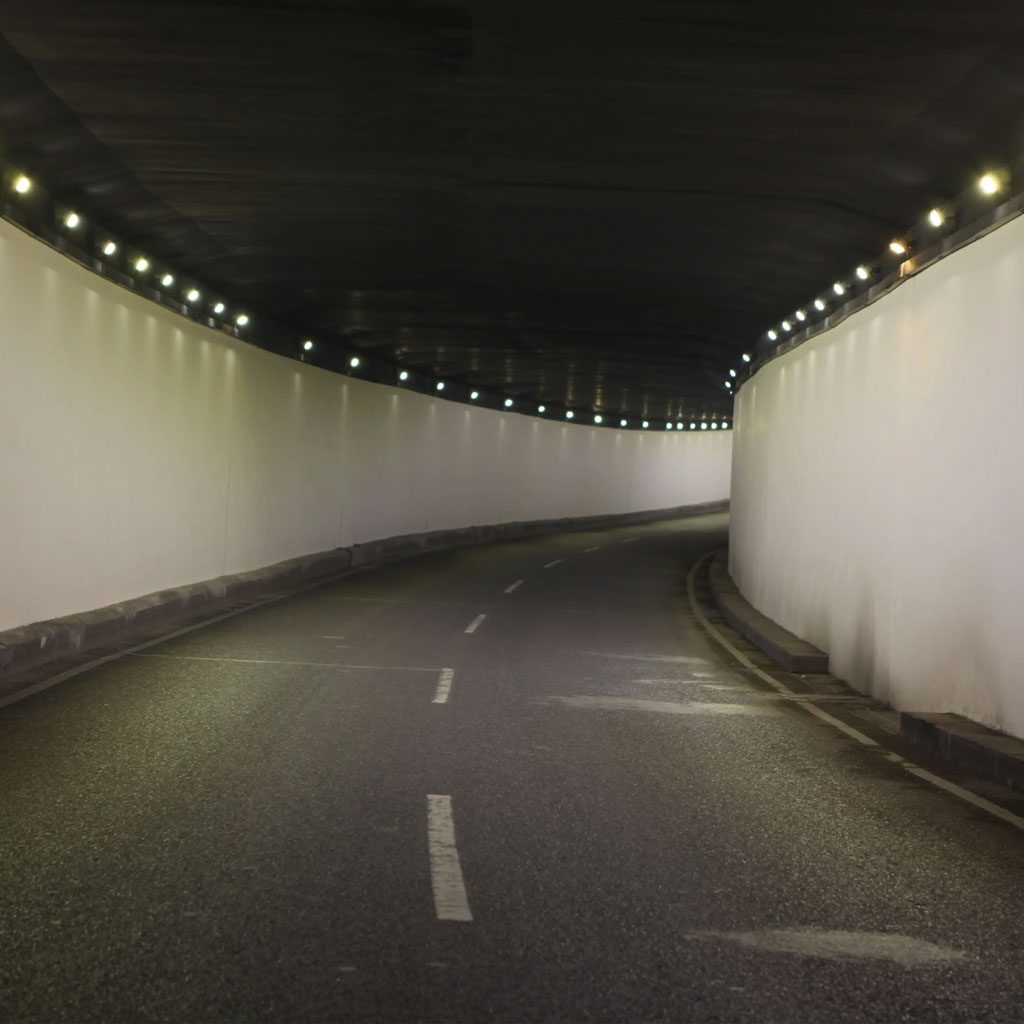
What Is Tunnel Light – The Define Of LED Tunnel Light
Tunnels are special sections of high-grade highways. When vehicles enter, pass through and exit the tunnel, a series of visual problems will occur. In order to adapt to changes in vision, additional electro-optical lighting needs to be set.LED Tunnel Lights are regarded as the most important components inside Tunnels. Adequate & Appropriate ilumination provided by LED Tunnel Lights can certainly reduce the occurrence of car accidents.
LED Tunnel Light uses high-intensity LED as the light source, which has high light efficiency and long life. It can realize multi-purpose lighting with different reflectors; and after softening, it will not cause dazzling or other uncomfortable reactions. The ballast adopts overheating protection technology to ensure the service life of lamps. Imported high-purity mirror aluminum anodized material is used as the reflector and through precise light distribution design, the power factor is greater than 0.9, the reflection efficiency is high, the light transmittance is good, energy saving and environmental protection.
The LED Tunnel Light shell is made of environmentally friendly alloy materials with high strength and good toughness. The transparent parts are reinforced tempered glass, which is dust-proof, waterproof, corrosion-resistant and rust-resistant. It has strong anti-strong collision and impact ability; multi-channel shock-proof structure and high-tech surface spraying treatment, various close-range high-intensity high-frequency vibrations cannot affect the lamps, and can be used in workshops, roadbeds, rails and other high-frequency vibrations and humidity. , Long-term stable work in high temperature environment. Good electromagnetic compatibility, will not cause interference to the power transmission network.
Your Ideal LED Tunnel Lighting Manufacturer – High Power LED Tunnel Light Suppliers
We Wonder, as an LED Tunnel Light company, supplies High Power LED Tunnel Lighting solutions that deliver a lighting source closer to natural daylight than the traditional lamps of the past. Our latest LED Tunnel Lighting solutions provide the twin benefits of reducing energy costs as well as environmental impact. The potential for energy savings from Tunnel LED lights is very substantial, although cost benefits may require a long period of time to release.
Our latest products as an LED Tunnel Lighting Manufacturer include low maintenance Tunnel LED lights for residential areas, public roads and also ideal solutions for solar road lighting. Our LED Tunnel lighting company designs and builds products with excellent optical design and light distribution. A photocell or daylight sensor is available as an option in our products. This unit boasts a broad light distribution due to the dual LED chips angled optimally to get the optimum light spread from this unit.
Wonder also offers the latest development in environmentally-friendly tunnel lighting. Developed specifically for applications in different geographic areas and applications, our class leading luminaire is amongst the most energy efficient luminaires on the market and complies with the requirements of European countries.
Superior energy efficiency is achieved by the precise distribution of the light to the working plane with high precision refractive prisms. This optimized light distribution also significantly reduces waste and spill light. Tunnel lighting from Wonder LED tunnel lighting manufacturer is also equipped with highly efficient and long-lasting LEDs which will help reduce not only running costs but also reduce maintenance. The superior reliability and long life of LEDs coupled with an aero screen visor, an IP66 Optical Chamber and the elimination of lamp replacements will significantly reduce servicing requirements and provide substantial cost savings. When maintenance is required, access to both the electronic control gear is via quick release latches making it essentially “Plug and Play”, to allow for future upgrading or easy replacement in the unlikely event of failure.
Wonder has specifically designed the mechanical concept of the luminaire to be as future-fit as possible. Both the optical module and the product’s gear tray are designed for rapid and simple replacement. This offers the option for an easy future upgrade to a higher performance setup, as future LED modules can easily be implemented. This unique feature allows a sustainable and future-oriented use of the high-quality luminaire housing.
The Features Of LED Tunnel Light
LED tunnel light is a kind of tunnel light. It is used in large-area flood lighting in tunnels, workshops, large warehouses, venues, metallurgy and various factories, engineering construction and other places. It is most suitable for urban landscapes, billboards, building structures Surface for landscaping lighting.
LED tunnel light is a kind of light-efficiency and energy-saving lamps. It uses light-emitting diodes (LED) as the light source of the luminous body. It has high light efficiency and long life. It can realize multi-purpose lighting with different reflectors. Dizziness or other uncomfortable reactions. The ballast adopts overheating protection technology to ensure the service life of lamps. Imported high-purity mirror aluminum anodized material is used as the reflector and through precise light distribution design, the power factor is greater than 0.9, the light reflection efficiency is high, the light transmittance is good, energy saving and environmental protection.
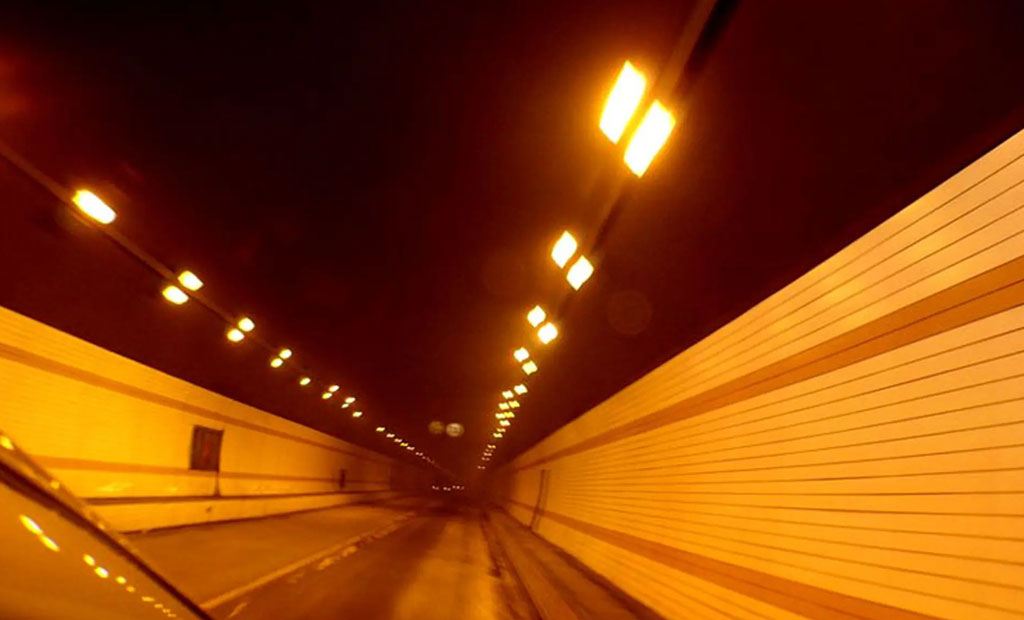
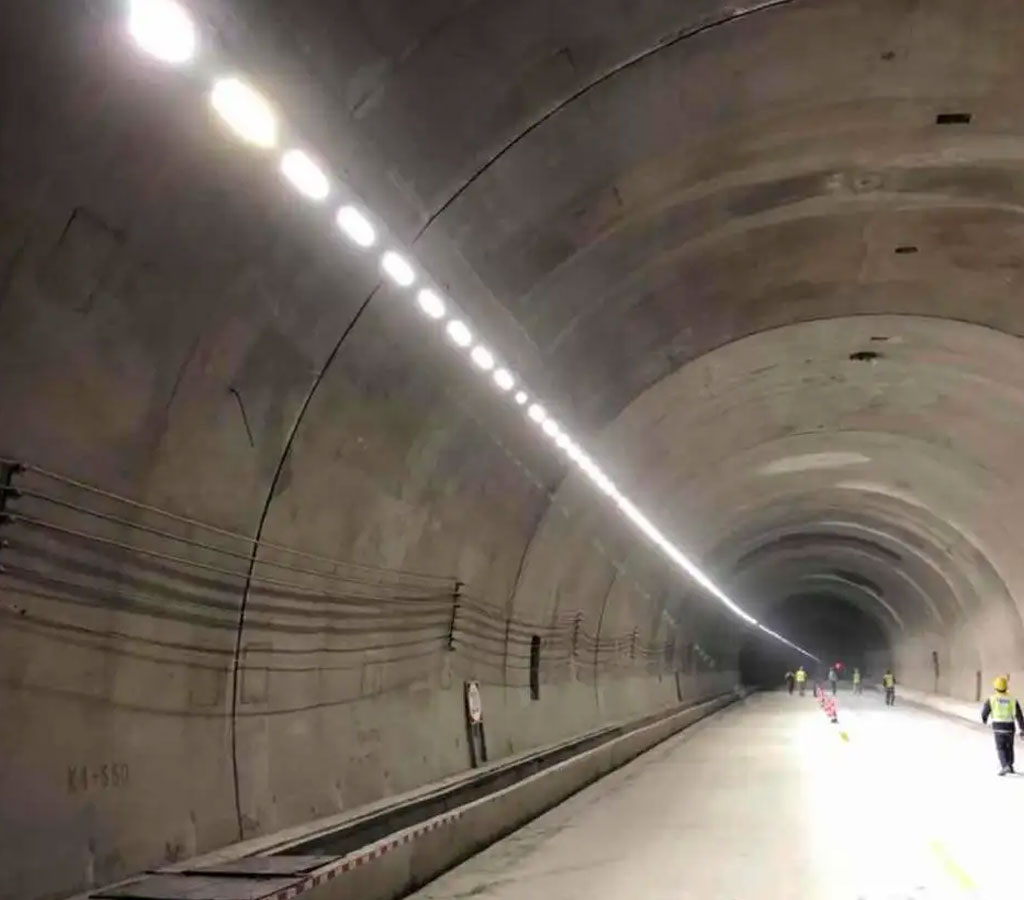
Comparison of LED and traditional tunnel lighting sources LED is a solid-state semiconductor device, which can directly convert electricity into light. Compared with traditional road tunnel lighting sources (sodium lamps, metal halide lamps, etc.), LED light sources have the following advantages:
- Low light decay: if the heat dissipation conditions are good, the first 10000h of the LED is positive light decay, the first 10000h light decay is 3% to 10%, and the first 50000h is basically 30%, which is far lower than ordinary road lighting sources. Glow is more stable.
- High color rendering: Generally, the color rendering of LED is about 70-80, and it is higher if three-primary phosphors are used; the general high-pressure sodium lamp is 20-35, and the low-pressure sodium lamp is lower, so even the brightness of traditional light source It is higher than LED, but the visual effect is worse than that of LED. “Not the brightest, but the clearest view” should be a direction of LED light source application development.
- Lifespan: The lifespan of LEDs is higher than that of general road tunnel lighting sources, and is now generally higher than 50000H.
- Price: Although the current price of LED lamp caps is higher than that of traditional lighting fixtures, with the maturity of manufacturing technology, its price is currently falling sharply. Generally, the price of a set of high and low pressure sodium lamps is about 600usd, while its cables and other accessories The price is higher than the cost of LED cables and so on.
In addition, LED also has the advantages of high maintenance factor, good safety performance, no flicker, energy saving and environmental protection.
The Lighting Requirements Of Tunnel – Factors Considered In Tunnel Lighting Design
Factors considered in tunnel lighting design include length, line type, interior decoration, road surface type, presence or absence of sidewalks, structure of link roads, design speed, traffic volume and vehicle types, etc., and also consider light source light color, lamps, arrangement, lighting The tunnel lighting design is to solve these problems.
Tunnel lighting energy saving is a requirement for light sources, lamps, lighting methods, etc. Energy saving includes lighting design energy saving and management energy saving. Among them, lighting design energy saving is the most important energy saving measure, which includes the adoption of novel and reliable design concepts and Reasonable standard value, as well as the use of high-efficiency light sources, high-efficiency lamps, increased light reflectance and lighting control energy saving, etc. Compared with traditional light sources, the biggest advantages of LEDs are energy saving and stability. Therefore, based on the advantages and characteristics of LEDs, improving the efficiency of LED chips and improving the overall efficiency of lamps with reasonable light distribution design are important issues that need to be solved in LED tunnel lighting.
The light efficiency of LED light source is a basic indicator to measure the efficiency of its tunnel light source. According to the actual requirements of LED tunnel lights, the light efficiency used needs to reach a certain level to meet the needs of replacing traditional sodium lamps and metal halide lamps for road lighting.
In recent years, with the continuous updating and development of LED chips, packaging and light distribution technology of lamps, the efficiency of LED light sources has been improved to a new high level. The effect is much higher than the current LED tunnel light products.Ordinary tunnels have the following special visual problems:
- Before Entering The Tunnel (Daytime): Due to the great difference in brightness inside and outside the tunnel, when viewed from the outside of the tunnel, a “black hole” phenomenon will be seen at the entrance of the tunnel with insufficient lighting.
- After Entering The Tunnel (Daytime): After a car enters a tunnel that is not too dark from the bright exterior, it takes a certain amount of time to see the inside of the tunnel, which is called the “adaptation lag” phenomenon.
- Tunnel Exit: In the daytime, when a car passes through a long tunnel and approaches the exit, due to the extremely high external brightness seen through the exit, the exit appears to be a “white hole”, which will present extremely strong glare, and the driver will It will feel uncomfortable; nighttime is the opposite of daytime, and what you see at the exit of the tunnel is not a bright hole but a black hole, so that the driver cannot see the line shape of the external road and the obstacles on the road.
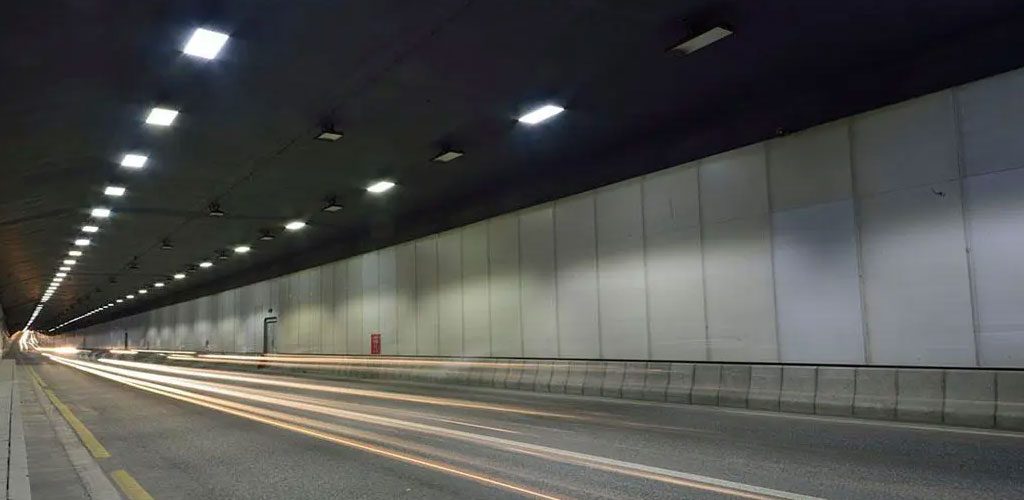
The above-mentioned special visual problems put forward higher requirements for tunnel lighting. To effectively deal with these visual problems, we can go through the following aspects.
Tunnel lighting is generally divided into five sections: approaching section, entrance section, transition section, middle section and exit section, each of which has a different function:
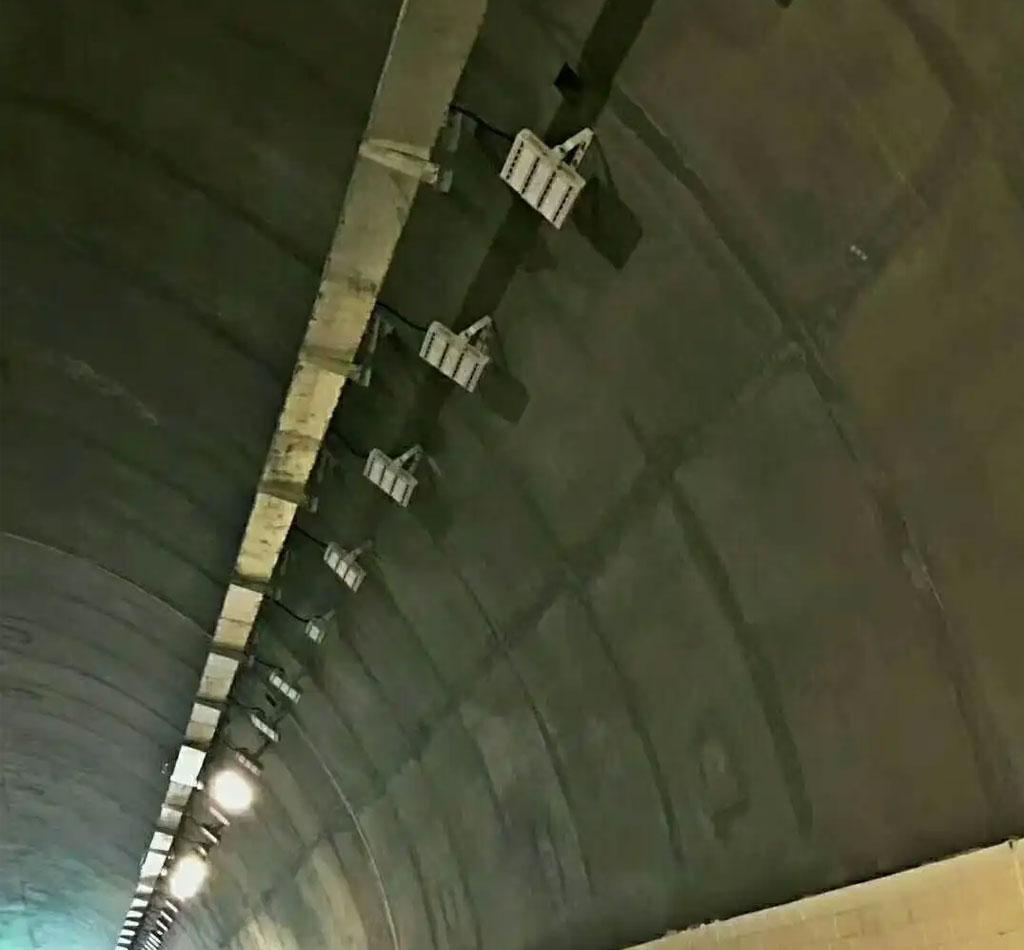
- Approaching section: The approaching section of the tunnel refers to a section of road close to the tunnel entrance. The starting point of the approaching section is one lighting parking sight distance from the opening. The lighting parking sight distance is valued according to the road tunnel lighting design rules. Located outside the tunnel, its brightness comes from the natural conditions outside the tunnel, without artificial lighting, but because the brightness of the approaching segment is closely related to the lighting inside the tunnel, it is also customary to call it a lighting segment.
- Entrance section: The entrance section is the first lighting section after entering the tunnel. The entrance section was previously called the adaptation section, which requires artificial lighting.
- Transition section: The transition section is the lighting section between the entrance section and the middle section. This section is used to solve the driver’s vision adaptation problem from high brightness in the entrance section to low brightness in the middle section.
- Middle section: After the driver drives through the entrance section and the transition section, the driver’s vision has completed the dark adaptation process. The task of lighting in the middle section is to ensure the safety and stability of the tunnel.
- Exit section: In the daytime, the driver can gradually adapt to the strong light at the exit to eliminate the “white hole” phenomenon; at night, the driver can clearly see the line shape of the external road and the obstacles on the road in the hole. , to eliminate the “black hole” phenomenon at the exit, the common practice is to use street lamps as continuous lighting outside the cave.
In the daytime, the illumination degree of the tunnel exit section is the same as the illumination degree of the entrance section, which should be higher than the basic illumination degree value in the tunnel; at night, on the contrary, it should be lower than the basic illumination degree value in the tunnel. When there is street lighting outside the tunnel, the brightness value of the road surface in the tunnel shall not be lower than twice the brightness value of the open air.
The Problems Existing In The Process Of Motor Vehicles Passing Through The Tunnel
1.Problems Presented In The Process Of Approaching The Tunnel
During the daytime, the eyes of motor vehicle drivers have adapted to the outdoor natural light illumination of more than 100,000 lx and thousands of cd/m2. When the eyes turn to the tunnel environment with a brightness of only a few cd/m2, the human eye has limited perception of the difference in brightness, showing the phenomenon of adaptation lag. , you will see a black cave, and its state cannot be identified. The phenomenon of seeing a completely black cave in a bright environment like this is called a black hole phenomenon. Once the black hole phenomenon occurs, as the motor vehicle approaches the tunnel, the driver’s visual interval is shortened, and it is impossible to drive safely. The black hole phenomenon is a visual problem that occurs before entering the tunnel, and it is the most important problem in tunnel lighting. In order to avoid the occurrence of the black hole phenomenon, it is necessary to ensure sufficient brightness in a certain interval from the entrance of the tunnel, which is slightly longer than the safety braking interval of the motor vehicle.
When entering the tunnel, due to the large difference in brightness between inside and outside, there is a delay in adapting, and the driver’s vision cannot quickly adapt to the brightness of the tunnel, making it difficult to see the inside of the tunnel. In order to avoid this situation, the brightness of the tunnel entrance should be reduced slowly with the visual adaptation speed, the brightness should be smoothly transitioned, and the brightness reduction should be stopped step by step, but the ratio of the brightness of the previous level to the brightness of the next level should not exceed 3:1, and the height should be 2m. The brightness of the following walls cannot be lower than the corresponding uniform road brightness.
2.Problems In The Process Of Passing Through The Tunnel
The brightness in the tunnel during the day is higher than that of the road at night, and the brightness at night is lower than that in the daytime. Considering the exhaust gas emitted by vehicles in long tunnels with large traffic flow, the exhaust gas cannot dissipate quickly to form smoke, absorb and scatter light, reduce visibility, and make visual recognition difficult. The brightness of the road 100m ahead is halved, and the influence of exhaust gas is usually compensated for by twice the brightness of the road lighting.
3.Problems When Approaching The Tunnel Exit
Through the exit, the exterior brightness is extremely high, the exit looks like a bright hole, showing serious glare, and the exit becomes a white cave, which is called the white cave phenomenon; with the white cave as the background, the motor vehicles and other vehicles become black silhouettes, which are easy to identify , but the silhouette of the car behind the large box truck and the large truck overlap is difficult to see. Near the exit of the tunnel with heavy traffic flow, the lighting used to identify the overlapping vehicles is called exit lighting. The length of the illumination interval is several tens of meters.
4.Problems Before Exiting The Tunnel At Night
At night, before driving out of the Liangtang Tunnel until there is no illuminated road, the outside of the tunnel also becomes a kind of black hole, and the alignment of the road and existing obstacles cannot be clearly seen. In the interval greater than the safe braking interval, which is approximately equivalent to the motor vehicle running for several seconds, the lighting on the road is stopped to achieve the appropriate level of brightness.
The Application Of LED Products In Tunnels
LED is used in tunnel lighting. Wonder LED tunnel light will automatically adjust the lighting intensity according to the intensity of light entering the tunnel. Intelligent dimming control system. Compared with the traditional plan, the power saving is 50%, and the life of the light source is 6-8 times that of the traditional tunnel lamps, which greatly reduces the loss of the light source and the cost of daily maintenance.
The Lighting Indicators Of Tunnels
Tunnel lighting is different from ordinary road lighting because it must be lit 24 hours a day, and the lighting intensity during the day is stronger than that at night. It is conceivable that the electricity cost of the tunnel has become an important part of the operating cost; in addition, the tunnel lighting is different from General road lighting has its obvious particularity, including people’s ability to adapt to light and shade, space and lighting for the transition between light and shade, etc. These are reflected in the design of tunnel lighting, and are inseparable to the safety of users relation. Tunnel lighting is usually divided into entrance lighting, interior lighting and exit lighting. Among them, the requirements for entrance lighting are very strict, and the brightness is gradually reduced from the brightness similar to that of the outside world. Specifically, the brightness of the tunnel entrance lighting during the day should be determined according to the brightness outside the tunnel, the speed of the vehicle, the field of view at the entrance, and the length of the tunnel. The International Institute of Illumination (CIE) divides tunnel entrance lighting into (starting from the tunnel entrance) threshold segment and transition segment. The threshold segment is to eliminate the “black hole” phenomenon and allow the driver to clearly identify obstacles at the entrance of the tunnel. The tunnel transition segment lighting is set to avoid strong changes between the threshold segment lighting and the interior basic lighting, and the lighting level further gradually decreases. . In Japan’s tunnel lighting standard, the tunnel entrance lighting is further divided into introduction section, adaptation section and transition section.
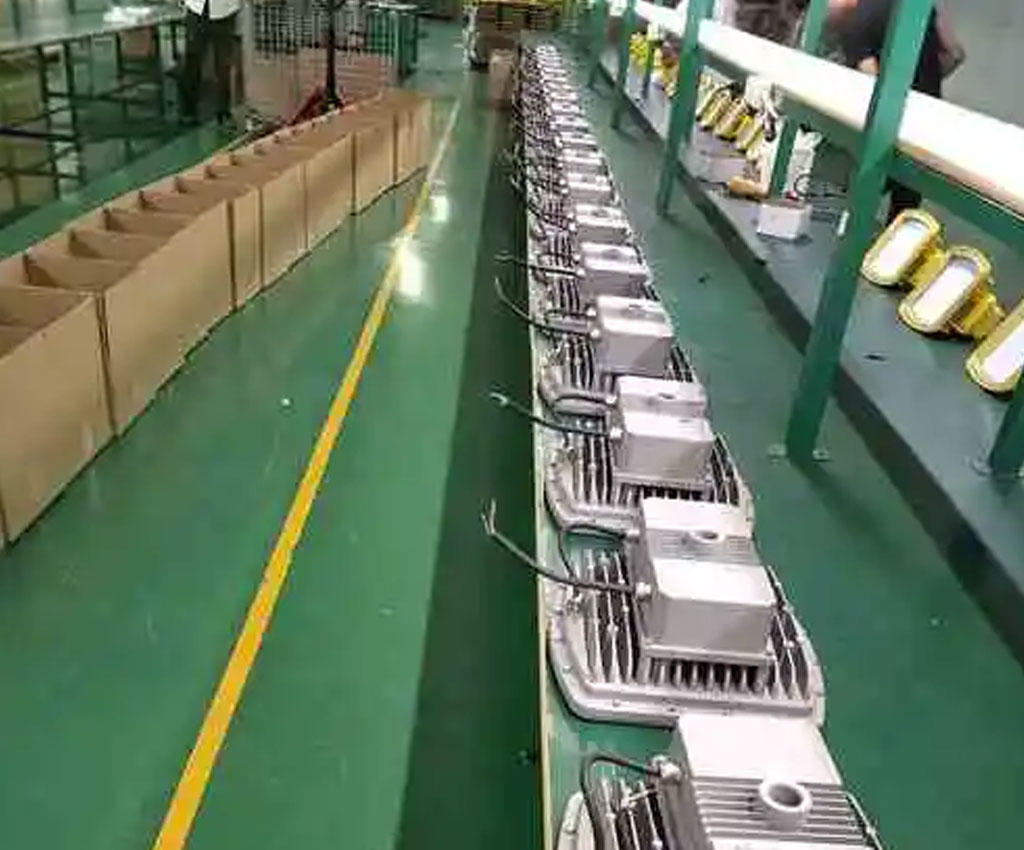
The inner section is the area within the tunnel away from the influence of external natural lighting, and the driver’s vision is only affected by the lighting inside the tunnel. The interior segment is characterized by a uniform illumination level throughout the segment. Because the lighting level does not need to change at all in this segment, it is only necessary to provide the appropriate brightness level in this segment, the specific value is determined by the traffic flow and vehicle speed. Distribution and brightness of the entry, transition, interior and exit segments of the tunnel.

Road tunnel lighting has its own characteristics, which are different from ordinary road lighting. The following points need to be considered in the design:
- The road surface should have a certain brightness level
- Tunnel walls should have a certain brightness level
- Design speed, traffic volume, route alignment and many other influencing factors
- Comprehensively determine the lighting level from the aspects of driving safety and comfort
- Human visual adaptability, especially at the entrance and exit of the tunnel
- The tunnel also needs lighting during the day, and the lighting problem during the day is more complicated than that at night.
The shell of the led tunnel light is made of environmentally friendly alloy materials with high strength and good toughness. It has strong anti-strong collision and impact ability; multi-channel shock-proof structure and high-tech surface spraying treatment, various close-range high-intensity high-frequency vibrations cannot affect the lamps, and can be used in workshops, roadbeds, rails and other high-frequency vibrations and humidity. , Long-term stable work in high temperature environment. Good electromagnetic compatibility, will not cause interference to the power transmission network.To save energy, improve lighting effects and ensure driving safety and comfort in tunnel lighting, the following aspects can usually be considered:
1.Brightness
Since the brightness outside the tunnel during the day is much higher than that inside the tunnel, when the driver drives into the tunnel, the vision needs to have a certain adaptation time before he can see the inside of the tunnel. This phenomenon is called “adaptation lag phenomenon” “If there is no proper transition, a black hole phenomenon will occur, causing the driver to temporarily lose normal visual function, which will bring certain safety hazards. The black hole phenomenon is a visual problem that occurs before entering a tunnel, and it is also the most important problem in tunnel lighting.
To this end, tunnel lighting is usually divided into entrance lighting, interior lighting and exit lighting. The brightness of the tunnel entrance lighting during the day should be determined according to the brightness outside the tunnel, the speed of the vehicle, the field of view at the entrance and the length of the tunnel. The threshold segment is to eliminate the “black hole” phenomenon, and the lighting level in the transition segment is further gradually decreased, thereby providing the driver with time for visual dark adaptation.
2.Brightness Uniformity
Good visual function not only requires a good average brightness, but also requires that the average brightness on the road surface and the minimum brightness should not be too different. If the brightness difference in the field of view is too large, the bright part will form a glare source, and the change of brightness and darkness will bring a certain stroboscopic effect, which will then affect the vision. Fatigue can also increase.
The overall brightness uniformity U0 refers to the ratio of the minimum brightness to the average brightness on the road surface in the inner section of the tunnel, and the longitudinal uniformity U1 refers to the ratio of the minimum road brightness to the maximum road brightness on the lane axis. If there are continuous and repeated bright and dark bands on the road surface, that is, the “zebra effect”, it will be very annoying for road users traveling in this lane. This problem involves human psychology, but also endangers road safety. The longitudinal uniformity is mainly used to evaluate the size of the “zebra effect”.
3.Glare
The formation of glare is due to the existence of extremely high brightness or brightness contrast in the field of view, which reduces visual function or makes the eyes feel uncomfortable. Glare in tunnel lighting can come from oncoming vehicle headlights, tunnel lighting fixtures, high brightness outside at tunnel exits, and the like. Glare will reduce people’s ability to recognize obstacles and endanger driving safety. Tunnel lighting should be of the cut-off type, and special technical measures to eliminate direct and reflected glare should be adopted to form diffuse reflection, so that the light can enter the human eye very softly.
The International Commission on Illumination has used relative threshold increments (TI) to account for the decline in visual function due to glare, a measure of disabling glare. In the tunnel lighting standard of the European Commission for Standardization (CR 14380:2003E), the provisions for disabling glare are as follows: The relative threshold increment (TI) must be less than 15% in the tunnel threshold section and inner section during the day and the entire tunnel at night .
4.Strobe Effect
Strobe means that in a long tunnel, due to the discontinuous arrangement of the illuminators, the driver is constantly stimulated by the change of light and shade, and is disturbed. It is related to the brightness change of light and dark, the frequency of light and dark change, and the total time of stroboscopic. These three are related to the optical characteristics of the lamps used, the travel speed of the vehicle, the installation distance of the lamps, and the length of the tunnel. Generally speaking, the stroboscopic phenomenon caused by the flicker frequency less than 2.5 and greater than 15Hz is acceptable.
If the speed of the vehicle is 60km/h or 16.6m/s, the installation spacing of the lamps is 4, so the frequency of the strobe is about 4.2Hz. When designing, it should be considered and choose the appropriate installation distance of the lamps. If the frequency of the strobe is between 4Hz and 11Hz, and the duration is more than 20s, it will bring obvious discomfort to the driver.
5.Lighting Control
The advanced lighting control method is an important technique for reasonable energy saving while ensuring the visual conditions and meeting the tunnel lighting requirements. The purpose of the lighting control is to be able to change the lighting level of the tunnel at any time. Due to cloudy, rainy or twilight, the brightness outside the tunnel entrance is much lower than usual, so appropriate measures should be taken to reduce the level of lighting at the entrance to reduce unnecessary energy waste. In tunnel lighting, the illuminance of the tunnel lighting environment or the opening and closing of lights can be adjusted and controlled through various dimming devices or control devices according to factors such as day, night, and traffic flow. At present, most of the foreign countries use photosensitive devices, dimmable electronic rectifiers, etc. to form an intelligent lighting system, which reduces the overall brightness of the lamps in the tunnel and reduces the energy consumption; at the same time, the uniformity of the tunnel brightness is kept unchanged.
The Case Studies Of LED Products In Tunnels
China’s tunnel lighting technology started late, and the research and development of LED products is lagging behind compared with foreign countries. However, in recent years, Chinese lighting companies have actively improved their independent research and development capabilities through foreign cooperation and exchanges, which has greatly promoted the development of LED lighting in China. Among them, there has been a major breakthrough in the energy-saving research of LED tunnel lights, which not only improves the efficiency of LED light sources, but also improves the overall efficiency of LED tunnel lights through the design and research of LED lamps and reasonable multiple light distribution. At present, there are large-scale Wonder LED tunnel lighting project cases and demonstration models in China, and most of them have received good responses.
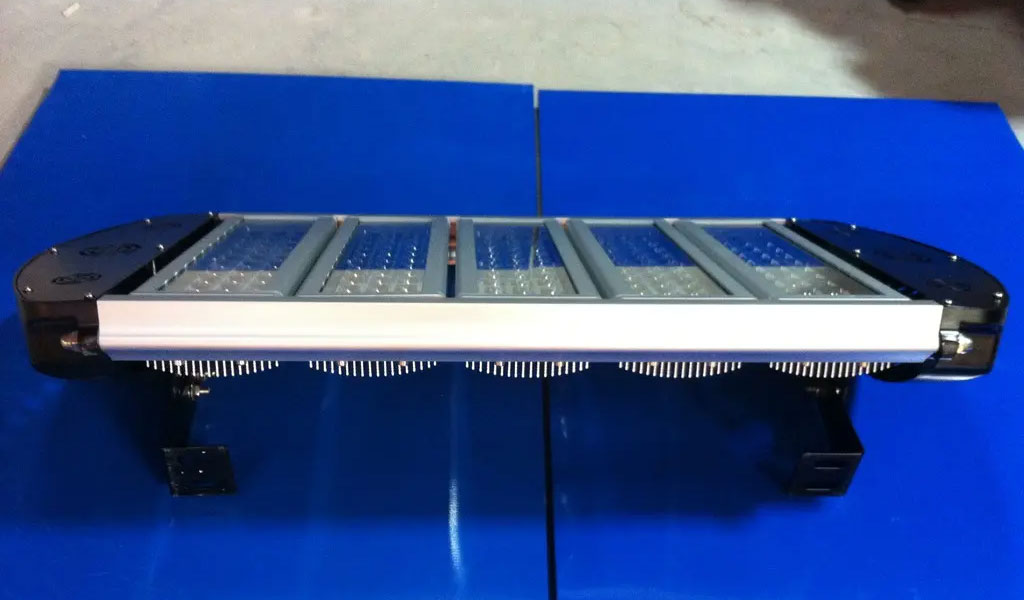
1.The Tunnel Lighting Design Of LED Tunnel Light
Tunnel lighting is different from ordinary road lighting, it has its obvious particularity, and its thinking about safety is particularly important in the lighting system.
When designing tunnel lighting plans, it is necessary to consider the elements of light adaptation and dark adaptation of people, and pay attention to the lighting design of transition sections and transition sections. In order to meet the driver’s eye compliance requirements, a period of light-dark transition lighting is required at the tunnel entrance to ensure certain vision requirements. The adaptation time at the tunnel exit is very short, usually within 1s, so no other treatment is required.
The tunnel is a closed space, and natural light cannot reflect it. In order to ensure the connectivity of driving and the safety of pedestrians, artificial lighting is required for the entire interior even in the daytime. Tunnel lighting is an indispensable part of tunnel construction.
The energy-saving research on new light sources for tunnel applications has attracted the attention of the industry, and the energy-saving research on LED tunnel lights has been seriously suspended. Due to the scientific research achievements such as the theory of photopic vision and intermediate vision, the relationship between color rendering and illuminance, LED has inherent advantages in tunnel lighting, so many important tunnel lighting projects in China have used LED tunnel lights. The application of LED tunnel luminaires in tunnel lighting projects has achieved a breakthrough, but there are still problems. 60% of the tunnels in Europe are in Italy, and this case is a practical application case of a tunnel in Rome, Italy.
Harsh environments such as automobile exhaust, noise, vibration, pure air, corrosive gas, and moisture constitute the particularity of tunnel lighting. In order to provide a safe and warm lighting environment for communicating vehicles and pedestrians, the following analysis will discuss the design ideas and methods of tunnel lighting.
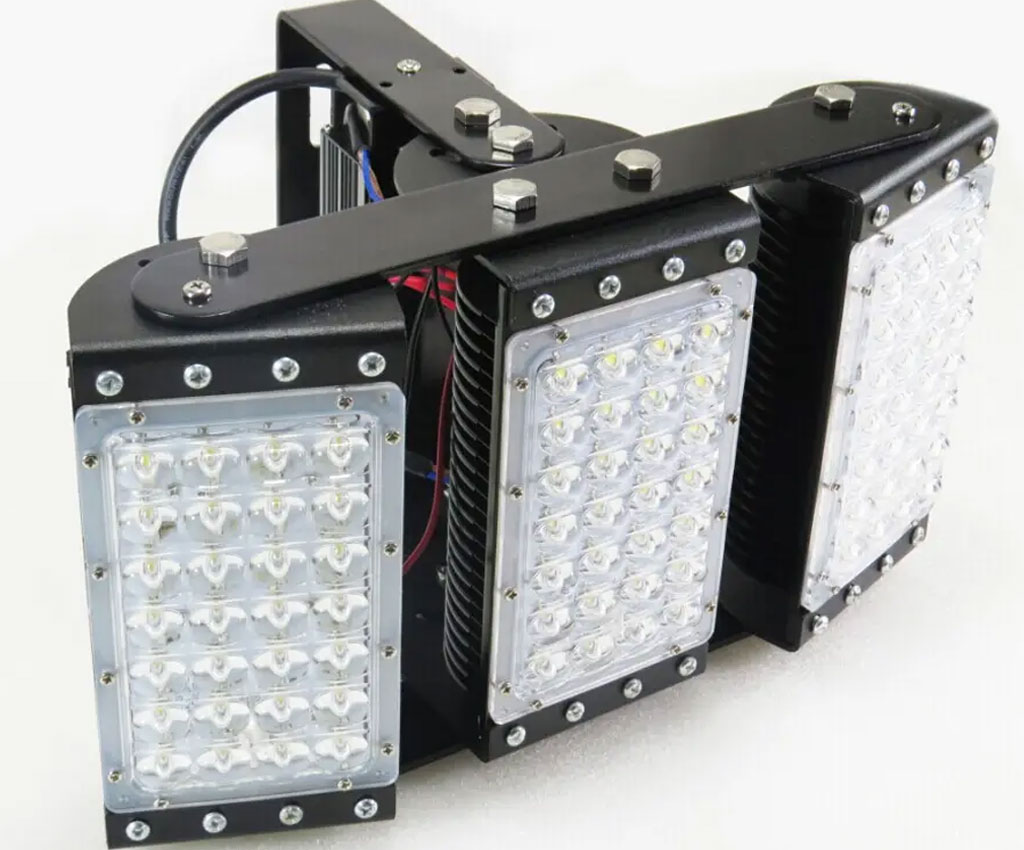
Using WONDER square LED tunnel light, the LED we use has improved to 1W 114-122Lm/W, the current voltage is 3.2V, we still use 320hA power supply, so the actual working power of one LED is 1.024W, 56 The total power of the light source is 61.6W, and our power conversion efficiency is 86%, so the total power is 72.6W. There are 103 tunnels with a total of 736 meters, and the total power is 103×71.6=7374.8W. Calculated by working 24 hours a day, the total power consumption is about 215.3 kWh, and about 71,950 kWh per year.
The length of the tunnel is 736 meters. The tunnel lights near the entrance adopt the method of intelligently controlling their brightness instead of the traditional sodium lamp that is directly turned off at night. Therefore, it is necessary to readjust the installation density of the overall lights according to the needs of the brightness in the air. The original sodium lamp installation design, when the strong light is turned on, will form three brightness areas, 0~30 meters away from the opening is the high brightness area, the brightness is 80Lux, 30~60 meters is the medium brightness area, the brightness is about 50Lux , 60~96 meters is the transition area of about 40Lux. The middle area of the tunnel is a low-brightness area with a brightness of about 30Lux. When the strong light is turned off at night, the entire tunnel is a low-brightness area with a brightness of about 30Lux.
After the tunnel LED transformation, a total of 40 LED tunnel lights at the entrance and exit of the interval tunnel will adopt intelligent control of their brightness to control their brightness. A total of 63 lights in the middle will work at full power throughout the year, and the total number of lights will be 103. 7 more than the previous design.
The detailed method is that a photosensitive controller is installed at each entrance and exit of the tunnel to collect light signals, and the light signals directly control and adjust the brightness of a total of 40 LED tunnel lights at the entrance and exit of the tunnel. When the light is good during the day, full power is used, and half-power is used at night. The power works, and the brightness changes with the change of the brightness of the external environment. The controller does not consume electricity. When the light outside the tunnel is good during the day, the lights at the tunnel entrance will work at full power. The brightness at this time basically meets the requirements of 80, 50, and 30Lux. It is requested that the brightness of the tunnel opening is about 40Lux after half-power operation at night, and the tunnel is still 30Lux. If you do not need the brightness to change with the change of the external environment, you can directly set a fixed time to change the brightness of the LED tunnel light.
2.The Demonstration Project Of Semiconductor Lighting Product Application
A few days ago, the bidding event for the demonstration project of semiconductor lighting product application demonstration project jointly organized by the National Development and Reform Commission, the Ministry of Housing and Urban-Rural Development, and the Ministry of Transport came to a successful conclusion.
In order to further promote the green lighting project and promote the healthy and orderly development of China’s LED lighting energy-saving industry, the three ministries and commissions jointly organized a public bidding for semiconductor (LED) lighting product application demonstration projects in early September. Shortlisted Enterprise for Semiconductor Lighting Application Demonstration Project”.
The bidding activity attracted hundreds of semiconductor lighting companies from abroad to actively participate. After a comprehensive evaluation by the three ministries and commissions on the advanced lighting technology, enterprise qualification, product quality and market price of the bidding enterprises, 28 Chinese and foreign excellent lighting enterprises including Wonder were finally determined to be the “Semi-conductor Lighting Application Demonstration Project Finalists”. It marks that the development of China ‘s semiconductor lighting industry will enter a new milestone.
The Installation Method Of LED Tunnel Light
The led tunnel light has a variety of installation methods such as ceiling type, boom type, seat type, wall-mounted type, etc., which is easier to operate. Adapt to the needs of different workplace lighting. The integrated design of lamps and electrical boxes, the overall reliability is strong, the failure rate is low, and the use and maintenance are safer and more convenient. LED tunnel lights can use intelligent control technology to realize their own dimming control and save energy. Basic conditions of LED tunnel lighting The long tunnel is equipped with lamps according to the double-hole one-way driving mode. The tunnel lighting is divided into the entrance section, the transition section 1, 2 and 3, the basic section and the exit section; the functions of the lamps are divided into three types: enhanced lights, all-day lights and emergency lights. . Lights are arranged on both sides, and the installation height of the lamps is 5.5 meters.
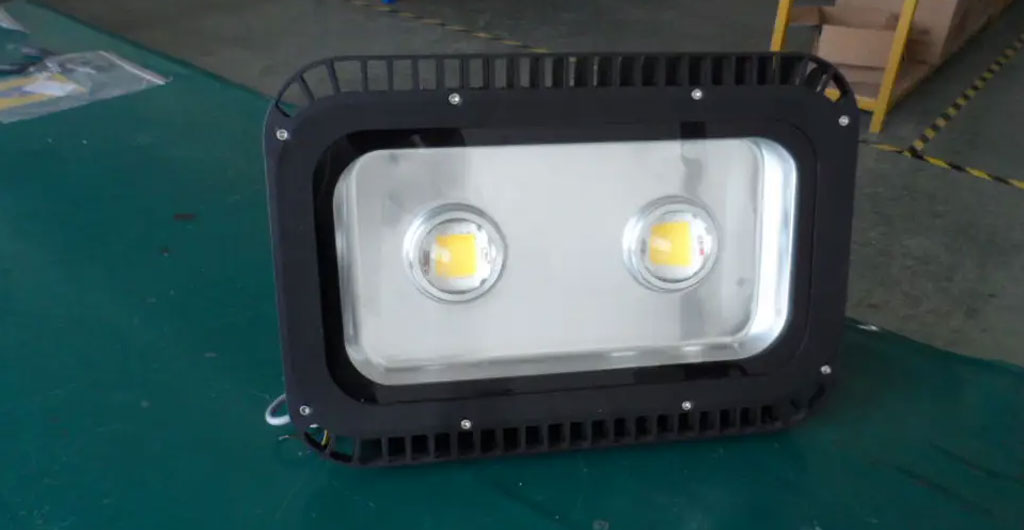

The Installation Of LED Tunnel Lights
The specific installation of LED tunnel lights is as follows:
- The First Row: from left to right: the installation distance of the first 5 lamps is 6 meters, and the illumination range is 30 meters; the installation distance of the 6th, 7th, and 8th lamps is 10 meters, and the illumination range is 30 meters; the 9th lamp The installation distance of the lamp is 14 meters, and the illumination range is 14 meters; the installation distance of the tenth lamp is 15 meters, and the illumination range is 15 meters; the middle lamp is installed at a distance of 18 meters/lamp, a total of 31 lamps, and the illumination area is 558 meters; The installation distance on the right side is the same as that on the left side, there are 10 lamps in total, and the irradiation range is 89 meters; the total length is: 65+103+141+151+1831+151+14* 1+103+65=736 meters, the total number of single-row lights is: 5+3+1+1+31+1+1+3+5=51 lights.
- The Second Row: from left to right: at the leftmost part of the 3-meter distance between the tunnel entrance, one LED tunnel light is installed at the tunnel entrance; the installation distance of the 2nd, 3rd, 4th, and 5th lights is 6 meters , the illumination range is 24 meters; the installation distance of the 6th lamp is 8 meters, and the illumination range is 8 meters; the installation distance of the 7th and 8th lamps is 10 meters, and the illumination range is 20 meters; the installation distance of the 9th lamp is 12 meters. , illuminating a range of 12 meters; the installation distance of the 10th lamp is 14.5 meters, illuminating a range of 14.5 meters; the installation distance of the 11th lamp is 16.5 meters, illuminating a range of 16.5 meters; the LED tunnel light in the middle is 18 meters / lamp distance Installation, a total of 30 lamps, irradiating a range of 540 meters; the installation distance on the right side is the same as the left side, a total of 11 lamps, and the irradiation range is meters; the total length is: 3+64+8+102+12+14.5+ 16.5+1830+16.5+14.5+12+102+8+6*4+3=736 meters, the total number of single row lights is: 1+4+1+2+1+1+1+30+1 +1+1+2+1+4+1=52 lamps. A total of 51+52=103 lights are required for a double row.
The Comparison Of LED Tunnel Lights And Traditional Tunnel Lights
Compared with traditional sodium lamps, LED tunnel lights save energy and money in the following aspects:
- Energy Saving Performance
- Lighting Power Consumption Is Reduced By Half;
- The Year-On-Year Calorific Value Is Low, And The Heat Dissipation Power Consumption Of The Tunnel Ventilation Is Reduced;
- The Working Current Is Small, And The Power Line Loss Of Long-Distance Power Transmission Is Reduced;
- Money Saving Performance:
- Save Lighting And Electricity Costs;
- Save Daily Maintenance Costs
- Save The Replacement Cost Of Lamps During The Lifetime
- Save Ventilation Costs
- Reduce The Cost Of Power Transmission (Low Current, Low Loss Of Long-Distance Transmission Lines)
- When Considering In The Design Stage, The Cable Diameter Can Be Reduced To Reduce The Construction Cost.

At present, among the light sources used in tunnel lighting applications, high-pressure sodium lamps have been widely used because of their high photopic luminous efficacy (up to 120lm/w), but high-pressure sodium lamps are still difficult to overcome in tunnel lighting. The main problem is that the color rendering is poor and the light source power selection range is limited (usually only 250W and 400W can be selected), especially in the interior segment lighting, the high-pressure sodium lamp has no small power on the one hand, and on the other hand, the point-shaped strong The glare and flicker caused by the light source are more serious.
In some long tunnels, straight-tube fluorescent lamps have also been used because of their high color rendering and better visual induction of linear lighting. However, due to the short life of fluorescent lamps, usually only about 8,000 hours, they often need to be replaced. , which greatly increases the maintenance cost of the tunnel. In addition, the power of fluorescent lamps is small, which cannot meet the requirements in areas that require high illumination such as the entrance section, transition section and exit section. In recent years, with the maturity of electrodeless lamp technology, due to the elimination of the influence of electrode factors, electrodeless fluorescent lamps have longer lifespan and higher power than traditional fluorescent lamps, which makes electrodeless lamps reflect in tunnel lighting applications. advantage. However, the light-emitting surface of the electrodeless lamp is relatively large, and the optical efficiency of the entire lamp is low during optical design. The Spark LED tunnel light can be said to integrate the advantages of high-pressure sodium lamps, straight-tube fluorescent lamps and electrodeless lamps. It is the most ideal light source for tunnel lighting applications. Its advantages are mainly reflected in the following aspects:
- High luminous efficiency; the current mass-produced single-chip 1W LED can achieve a maximum luminous efficiency of more than 100lm/w, and because it is single-sided, it can achieve high luminaire efficiency in the design process of the entire luminaire optical system.
- Long lifespan; LEDs can have a lifespan of 50,000 to 70,000 hours under reasonable heat dissipation design and power drive conditions. For 24-hour lighting tunnel lighting applications, maintenance costs can be greatly reduced, and investment returns can be shortened Expect.
- Easy light distribution; LED light source has a small light-emitting size, single-sided light, and strong directionality of light, so it can be easily matched with a lens or a reflector to achieve an ideal light distribution, which not only improves the utilization of the entire lamp efficiency, and can ensure good uniformity.
- The design of lamps is flexible; Spark LED tunnel lamps are not only flexible in power design, but also use LED devices of about 1W, and the number of LED light sources can be changed according to the actual illumination requirements to achieve the best energy-saving effect. The design of the shape is also very flexible. It can be made into a linear lamp to achieve better visual permeability, or a rectangular lamp can be designed for the entrance section, transition section and exit section with higher illumination requirements.
- Intelligent dimming control; the use of LED can realize the stepless dimming of lamps, and can dynamically change the brightness of tunnel lighting in combination with the brightness of the opening, give full play to the technical characteristics of LED tunnel lighting, and further improve the energy-saving effect of LED tunnel lighting. Intelligent tunnel lighting.
Wonder patented intelligent LED tunnel light can realize computer dimming, temperature control, automatic inspection, adjustable elevation/horizontal angle and other functions. The luminous efficiency of the lamps is 80lm/W, and the energy saving rate is 70%.Although there are still many difficulties and challenges in the large-scale application of LED tunnel lights, such as the imperfection of LED lighting product standards, the negative impact of some inferior products on market promotion, and the high initial purchase cost of LED tunnel lights.
All these put pressure on the large-scale market application of LED tunnel lighting products, but these pressures are inevitable for any new technology or new product to be encountered in the early stage of promotion and application. However, with the further development of high-power white LED technology, the continuous maturity of LED tunnel lighting thermoelectric system technology, and the further enhancement of people’s awareness of energy conservation and environmental protection, LED technology will surely create a new future for the semiconductor lighting industry in the field of tunnel lighting applications.




